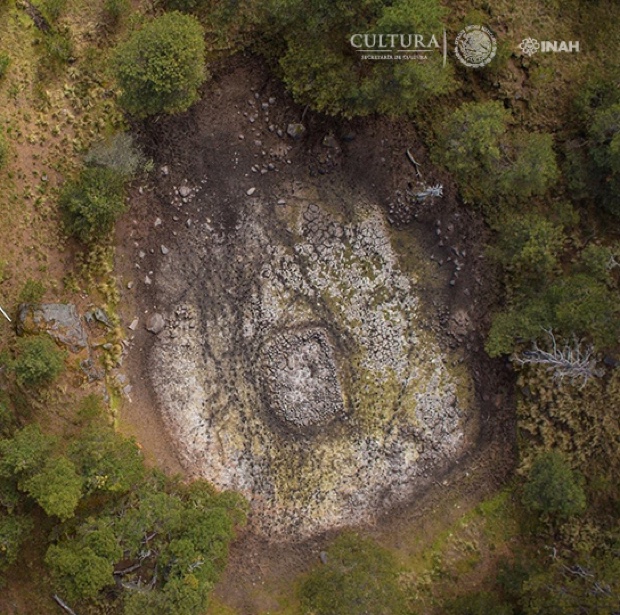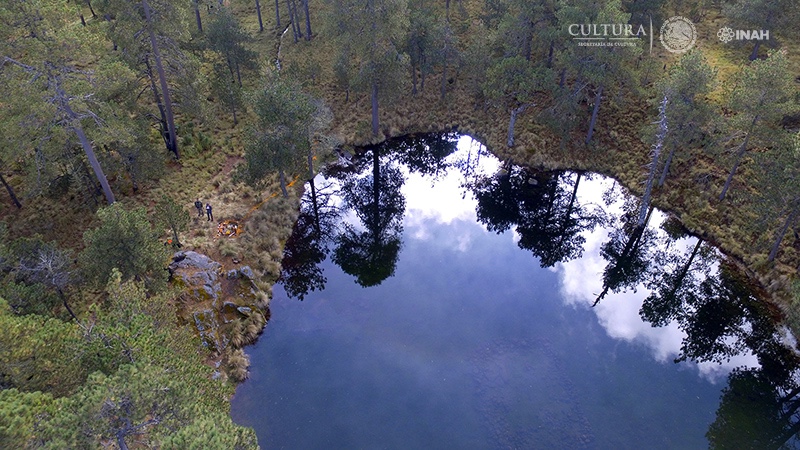1,000-Year-Old Stone Structure in Mexico May Depict Creation of Earth

A 1,000-year-old stone structure in Mexico may represent how some people in ancient Mesoamerica believed the Earth was created, an archaeologist suggests.
Located on the foothills of a volcano in the middle of a pond, the "Tetzacualco" (a name that can mean "stone enclosure") has been known to explorers since the 16th century. Since that time, both amateur explorers and professional archaeologists have investigated the structure, putting forth a variety of ideas as to what the structure was used for and when it was built. Made of numerous stones, it's about 37.7 x 32.2 feet (11.5 x 9.8 meters).
A new series of excavations, led by Iris del Rocío Hernández Bautista, an archaeologist with Mexico's National Institute of Anthropology and History, or Instituto Nacional de Antropología e Historia (INAH), aims to be the most intensive investigation of the Tetzacualco ever conducted. [The 25 Most Mysterious Archaeological Finds on Earth]
In preliminary findings, Hernández Bautista's team announced in a statement that at the site, they discovered pottery and stone artifacts that date back over 1,000 years. The team also found evidence that ancient Mesoamericans tried to irrigate the pond where the Tetzacualco resides, making sure it never ran out of water, even when there was little rain.

Given what the archaeologists have found so far, Hernández Bautista hypothesizes that the Tetzacualco's large size and location in the middle of a pond mean that the structure is an attempt to represent a mythical creature known as Cipactli or Çipaqli, a fish monster from which the gods created the Earth, according to some ancient Mesoamerican legends.
One version of the legend was recorded in the 16th century by a Spanish priest named Andrés de Olmos and claims that four gods "made the water and created in it a great fish similar to an alligator which they named Çipaqli, and from this fish they made the Earth" (translation by Henry Phillips Jr.).
Who created it?
Though some media outlets reported that the Tetzacualco was constructed by the Aztecs (a Mesoamerican culture that flourished between 1300 and 1500), the artifacts that the archaeologists recovered indicate that the structure was created at least three centuries before the Aztecs by an even earlier Mesoamerican culture whose identity is not yet clear, according to the statement from the research team.
Sign up for the Live Science daily newsletter now
Get the world’s most fascinating discoveries delivered straight to your inbox.

Nor is it clear how long the Tetzacualco was used or what kind of ceremonies took place there. During the 16th century, Juan Bautista Pomar, a writer in Mexico who was of mixed Spanish and Native Mesoamerican descent, claimed that the Tetzacualco was in use up until that century and that children were sometimes sacrificed there.
Bautista Pomar claimed that the Tetzacualco had a statue that depicted Tlaloc, a Mesoamerican god of rain, that "has its face towards the east," and that those in charge of the Tetzacualco "made sacrifices of innocent children to him [the idol depicting Tlaloc] once a year." (Pomar's statement was translated by Leon García Garagarza in the book "Mesoamerican Memory: Enduring Systems of Remembrance" (University of Oklahoma Press, 2012), by Amos Megged and Stephanie Wood.
So far, the INAH team has not found any humans remains at the Tetzacualco, although excavations are in progress.
Original article on Live Science.

Owen Jarus is a regular contributor to Live Science who writes about archaeology and humans' past. He has also written for The Independent (UK), The Canadian Press (CP) and The Associated Press (AP), among others. Owen has a bachelor of arts degree from the University of Toronto and a journalism degree from Ryerson University.










